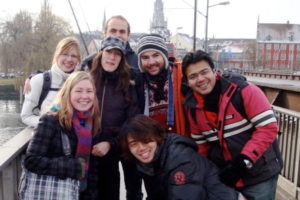With cultural globalization comes cultural change. I have been on the Rio Negro in the Amazon rainforest, only to hear a canoe approach with someone playing Madonna. Hip hop has become a global phenomenon. Many people decry what they see as the emergence of a new global culture: shallow, celebrity-focused and American dominated. Part of this critique focuses on the danger not only to local cultures, but also to languages, thousands of which are endangered globally. The Enduring Voices project of National Geographic is currently seeking to record some of these tongues before they disappear forever, not only to document them for history, but also to facilitate efforts to revitalize them. I have thought about indigenous language based on my field work in Oaxaca around HIV/AIDS. How do you do HIV prevention work in a region that may have more than 16 different indigenous languages, each of which has many different dialects? Zapotec itself has more than twenty dialects, each of which has its own name, such as Lhej, Xan, Xhon and Xidza. The diversity of these languages is amazing. Mazotec is a tonal language, which has a whistled form, so that people can communicate across the valleys through whistles. But while we focus on language loss, and indigenous languages, it is interesting to also remember that new languages are also being born. …
Sheng: Cultural Globalization and New Languages in AfricaRead More »


